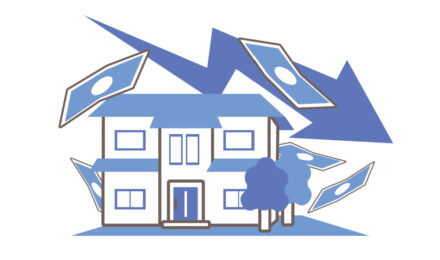Recent events—from devastating wildfires in the United States and Australia to record-breaking global temperatures, accelerated ice melt, and powerful hurricanes—have intensified public concern about the planet’s future. “Climate anxiety,” also called “eco-anxiety,” describes the deep unease or paralysis many feel when confronting these threats. According to a 2023 report by the American Psychological Association, over 65 % of surveyed adults reported experiencing eco-anxiety.1 Yet awareness alone isn’t enough. How can we harness that anxiety to drive meaningful, sustainable change?
This article will:
- Define climate (eco-)anxiety and explore why it’s on the rise
- Offer strategies for managing anxiety so you can focus on solutions
- Present realistic steps to channel concern into collective climate action
- Share inspiring stories of individuals and communities leading the way
What Is Climate Anxiety—and Why Is It Growing?
Climate anxiety refers to persistent feelings of dread, worry, or guilt about environmental destruction and the future of our planet. Triggers often include:
- Sensationalized news coverage of extreme weather and disasters
- Helplessness about whether personal actions can make a difference
- Shame or guilt over one’s own carbon footprint
Populations especially affected include:
- Young people: Many Gen Zers describe the climate’s future in terms of horror and fear.2
- Front-line communities: Residents in hurricane-prone or drought-stricken areas who face the brunt of climate impacts.
- Scientists and activists: Constant exposure to alarming data can lead to burnout and emotional exhaustion.
Managing Climate Anxiety: A Psychological Toolkit
Before taking action, it’s crucial to address the emotional toll:
- Acknowledge Your Feelings
Recognize that anxiety is a natural response to a genuine existential threat. Talking with others—whether in support groups or therapy sessions focused on climate stress—can help normalize these emotions. - Limit “Doomscrolling”
Constantly consuming alarming headlines can exacerbate anxiety. Set clear boundaries—such as checking climate news only once a day—and balance it by seeking out solution-focused reports. - Focus on What You Can Control
Redirect energy toward areas where you can make a real impact. This might include:- Personal habits (e.g., reducing waste, choosing eco-friendly products)
- Community efforts (e.g., local cleanups, neighborhood gardening)
- Advocacy (e.g., signing petitions, voting for climate-responsive policies)
From Worry to Action: Practical Steps at Every Level
1. Build Small, Sustainable Habits
Rather than striving for perfection, aim for consistency. For instance:
- Embrace the “Five Rs”: Refuse, Reduce, Reuse, Recycle, Rot
- Adopt a low-carbon diet with more plant-based meals
- Cut energy use by switching to LED lighting, taking public transit, and buying energy-efficient appliances
2. Join or Launch Community Initiatives
Collective action multiplies impact. You might:
- Participate in tree-planting or river-cleanup events
- Organize town-hall meetings to discuss local climate policies
- Encourage financial institutions to divest from fossil fuels
3. Apply Your Skills for Climate Good
Everyone has talents that can advance climate solutions:
- Artists and musicians can create work that raises awareness
- Tech professionals can develop apps to track carbon footprints or share sustainability tips
- Educators can integrate climate science into their curricula to inspire future generations
Inspiring Examples of Climate Leadership
- Greta Thunberg’s Fridays for Future movement galvanized millions of young people worldwide to demand policy change.
- The city of Copenhagen has set a goal to become carbon-neutral by 2025, demonstrating how bold municipal planning can drive progress.
- Indigenous communities in the Amazon use traditional knowledge to protect biodiversity and influence national conservation strategies.
Conclusion: Embracing Sustainable Activism
Climate anxiety need not lead to paralysis. By acknowledging our emotions, setting boundaries around distressing news, and focusing on actionable steps—both personally and collectively—we can transform fear into positive momentum. Every small habit, community effort, and skill-driven project contributes to a healthier planet. Let’s turn our anxiety into optimism and our concern into concrete change.
Recent events—from devastating wildfires in the United States and Australia to record-breaking global temperatures, accelerated ice melt, and powerful hurricanes—have intensified public concern about the planet’s future. “Climate anxiety,” also called “eco-anxiety,” describes the deep unease or paralysis many feel when confronting these threats. According to a 2023 report by the American Psychological Association, over 65 % of surveyed adults reported experiencing eco-anxiety.1 Yet awareness alone isn’t enough. How can we harness that anxiety to drive meaningful, sustainable change?
This article will:
- Define climate (eco-)anxiety and explore why it’s on the rise
- Offer strategies for managing anxiety so you can focus on solutions
- Present realistic steps to channel concern into collective climate action
- Share inspiring stories of individuals and communities leading the way
What Is Climate Anxiety—and Why Is It Growing?
Climate anxiety refers to persistent feelings of dread, worry, or guilt about environmental destruction and the future of our planet. Triggers often include:
- Sensationalized news coverage of extreme weather and disasters
- Helplessness about whether personal actions can make a difference
- Shame or guilt over one’s own carbon footprint
Populations especially affected include:
- Young people: Many Gen Zers describe the climate’s future in terms of horror and fear.2
- Front-line communities: Residents in hurricane-prone or drought-stricken areas who face the brunt of climate impacts.
- Scientists and activists: Constant exposure to alarming data can lead to burnout and emotional exhaustion.
Managing Climate Anxiety: A Psychological Toolkit
Before taking action, it’s crucial to address the emotional toll:
- Acknowledge Your Feelings
Recognize that anxiety is a natural response to a genuine existential threat. Talking with others—whether in support groups or therapy sessions focused on climate stress—can help normalize these emotions. - Limit “Doomscrolling”
Constantly consuming alarming headlines can exacerbate anxiety. Set clear boundaries—such as checking climate news only once a day—and balance it by seeking out solution-focused reports. - Focus on What You Can Control
Redirect energy toward areas where you can make a real impact. This might include:- Personal habits (e.g., reducing waste, choosing eco-friendly products)
- Community efforts (e.g., local cleanups, neighborhood gardening)
- Advocacy (e.g., signing petitions, voting for climate-responsive policies)
From Worry to Action: Practical Steps at Every Level
1. Build Small, Sustainable Habits
Rather than striving for perfection, aim for consistency. For instance:
- Embrace the “Five Rs”: Refuse, Reduce, Reuse, Recycle, Rot
- Adopt a low-carbon diet with more plant-based meals
- Cut energy use by switching to LED lighting, taking public transit, and buying energy-efficient appliances
2. Join or Launch Community Initiatives
Collective action multiplies impact. You might:
- Participate in tree-planting or river-cleanup events
- Organize town-hall meetings to discuss local climate policies
- Encourage financial institutions to divest from fossil fuels
3. Apply Your Skills for Climate Good
Everyone has talents that can advance climate solutions:
- Artists and musicians can create work that raises awareness
- Tech professionals can develop apps to track carbon footprints or share sustainability tips
- Educators can integrate climate science into their curricula to inspire future generations
Inspiring Examples of Climate Leadership
- Greta Thunberg’s Fridays for Future movement galvanized millions of young people worldwide to demand policy change.
- The city of Copenhagen has set a goal to become carbon-neutral by 2025, demonstrating how bold municipal planning can drive progress.
- Indigenous communities in the Amazon use traditional knowledge to protect biodiversity and influence national conservation strategies.
Conclusion: Embracing Sustainable Activism
Climate anxiety need not lead to paralysis. By acknowledging our emotions, setting boundaries around distressing news, and focusing on actionable steps—both personally and collectively—we can transform fear into positive momentum. Every small habit, community effort, and skill-driven project contributes to a healthier planet. Let’s turn our anxiety into optimism and our concern into concrete change.




